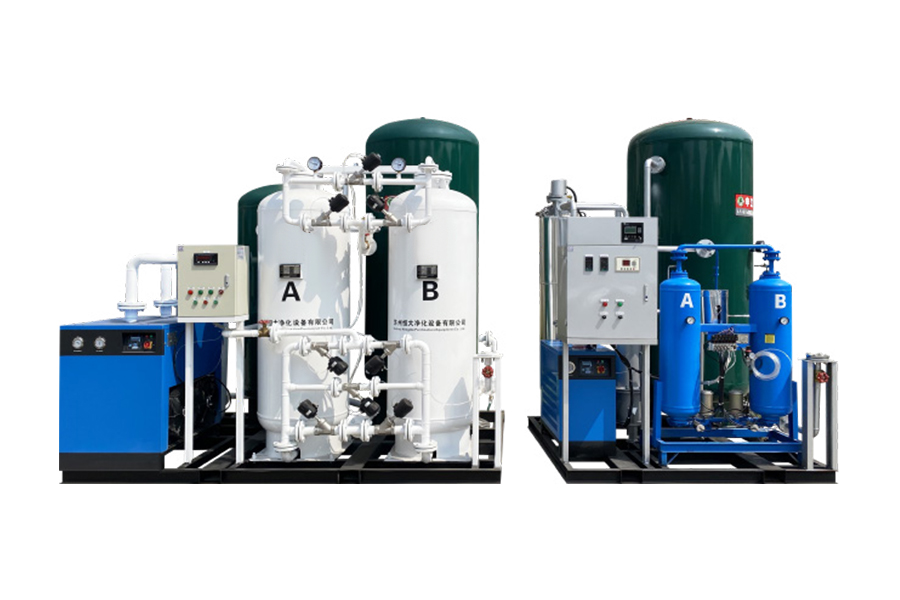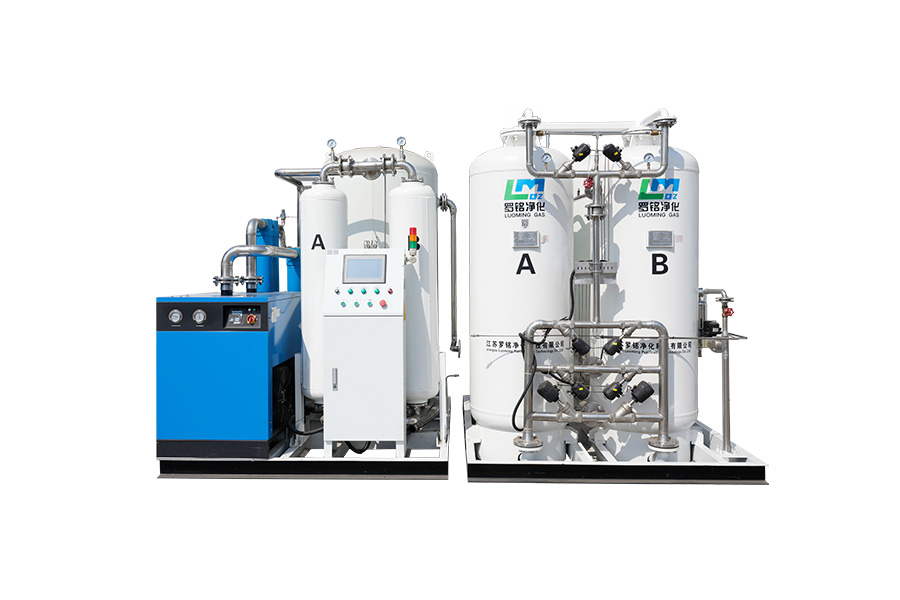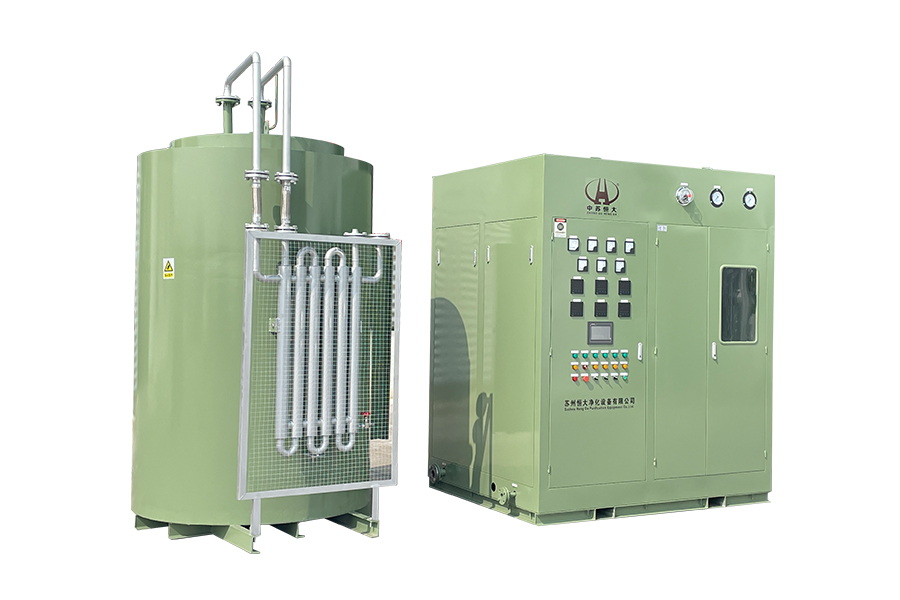Introduction
Oxygen is fundamental to life, and in medical settings, a consistent and reliable supply of medical-grade oxygen is absolutely critical. Traditionally, hospitals and clinics relied on oxygen cylinders, but the advent of medical oxygen generators has revolutionized how healthcare facilities acquire this essential resource. These devices offer a cost-effective, on-demand solution for producing high-purity oxygen directly at the point of need, reducing logistical complexities and ensuring an uninterrupted supply. This article will delve into the various aspects of medical oxygen generators, from their different types and key features to their wide-ranging applications and crucial considerations for selection.
Medical oxygen generators come in various forms, primarily categorized by their flow capacity and the technology they utilize to separate oxygen from the air.
By Flow Rate
Oxygen generators are designed to meet different demands, from single-patient use to large-scale hospital requirements.
Low Flow (Portable/Home Use): These typically produce oxygen at rates from 1 to 10 liters per minute (LPM). They are compact, lightweight, and often battery-operated, making them ideal for individual patients requiring oxygen therapy at home or on the go.
Medium Flow (Clinic/Small Facility Use): Ranging from 10 to 50 LPM, these generators are suitable for smaller clinics, nursing homes, or specialized medical units. They can support multiple patients simultaneously or provide oxygen for procedures requiring moderate flow.
High Flow (Hospital/Industrial Use): Capable of producing over 50 LPM, these are robust systems designed for hospitals, large medical centers, and emergency response units. They can supply oxygen for an entire facility, including ICUs, operating rooms, and general wards. Some industrial-grade systems can reach several hundred or even thousands of LPM.
By Technology
The core of an oxygen generator lies in its separation technology.
Pressure Swing Adsorption (PSA): This is the most common technology for medical oxygen generators. PSA systems work by using a molecular sieve (typically zeolite) to adsorb nitrogen from the air under high pressure, allowing oxygen to pass through as a product gas. When the pressure is released, the nitrogen is desorbed, and the sieve regenerates for the next cycle. PSA systems are known for their reliability, efficiency, and ability to produce oxygen with purity levels typically ranging from 90% to 96%.
Vacuum Pressure Swing Adsorption (VPSA): VPSA is a variation of PSA that uses a vacuum pump to lower the pressure during the regeneration phase. This can improve efficiency and reduce energy consumption, especially for larger systems. VPSA systems are generally more complex and larger than standard PSA units but can offer advantages in certain high-capacity applications.
Membrane Separation: While less common for dedicated medical oxygen generators due to lower purity levels compared to PSA, membrane technology uses semi-permeable membranes to separate oxygen from air based on the different permeation rates of gases. This method is often simpler and can be more compact but typically yields oxygen purity in the 30-40% range, making it unsuitable for direct medical use without further purification or for applications requiring high purity. It's more often seen in industrial applications where lower purity is acceptable or as a pre-concentration step.
Key Features to Consider
When selecting a medical oxygen generator, several crucial features differentiate models and impact their suitability for specific applications. Understanding these parameters is essential for making an informed decision.
Core Parameters
These are the fundamental specifications that directly relate to the generator's performance and output.
Oxygen Purity: This is paramount for medical applications. Medical-grade oxygen typically requires a purity of at least 93% ± 3% (ranging from 90% to 96%). Always verify that the generator can consistently meet this standard. Some non-medical applications might tolerate lower purities, but for patient care, this specification is non-negotiable.
Flow Rate (LPM): As discussed, this indicates the volume of oxygen the generator can produce per minute. Match the flow rate to the anticipated demand. For a single patient at home, a few LPM might suffice, while a hospital will need significantly higher capacities to serve multiple outlets and critical care units.
Outlet Pressure: The pressure at which oxygen is delivered is important for connecting to medical devices like ventilators, flowmeters, or central gas pipelines. Ensure the generator's outlet pressure is compatible with your existing infrastructure and equipment.
Power Consumption: Oxygen generators are electrical devices. Consider the energy efficiency (often measured in watts or kilowatts per liter of oxygen) to estimate operating costs. Higher efficiency means lower electricity bills over time.
Noise Level: Especially for home or clinical settings, a quiet operation is highly desirable for patient comfort and a peaceful environment. Noise levels are typically measured in decibels (dB). Look for models with lower dB ratings.
Size and Weight: These factors are crucial for portability and space considerations. A home oxygen concentrator needs to be compact and relatively lightweight, while a large hospital system will be stationary and occupy a dedicated plant room.
Additional Features
Beyond the core specifications, these features enhance usability, safety, and longevity.
Alarms and Safety Features: Essential for patient safety. Look for alarms that indicate:
Low Oxygen Purity: Alerts users if the oxygen purity drops below an acceptable level.
High/Low Pressure: Signals issues with the system's internal pressure.
Power Failure: Informs of an interruption in the power supply.
Temperature Abnormalities: Warns of overheating or excessively cold conditions.
System Malfunction: General fault indicators.
Automatic Shut-off: A critical safety feature that turns off the unit in case of severe malfunction or power issues.
Maintenance Indicators and Ease of Maintenance: Generators require regular maintenance, such as filter changes. Indicators that alert users when maintenance is due, and designs that allow for easy access to replaceable components, can significantly reduce downtime and operational hassle.
Remote Monitoring Capabilities: For larger systems, the ability to monitor performance, purity, and alarms remotely via a computer or mobile device can be invaluable for facility managers, allowing for proactive maintenance and rapid response to issues.
Durability and Warranty: Medical equipment is an investment. A robust build quality and a comprehensive warranty indicate the manufacturer's confidence in the product's longevity and reliability.
Portability Features (for portable units): For home-use devices, features like long battery life, lightweight design, carrying bags, and wheels are critical for patient mobility and independence.
Applications
Medical oxygen generators have a wide range of applications, extending beyond traditional healthcare settings due to their ability to produce oxygen on-site.
Medical Uses
The primary and most critical application of these generators is in providing medical-grade oxygen for patient care.
Hospitals and Clinics: This is the most common application. Large-scale PSA or VPSA systems supply oxygen directly to a hospital's pipeline system, feeding operating rooms, intensive care units (ICUs), emergency departments, and patient rooms. This ensures a continuous and reliable oxygen supply, reducing dependence on external cylinder deliveries.
Emergency Medical Services (EMS): Mobile oxygen generators, often smaller and more rugged, can be deployed in ambulances, field hospitals, or disaster relief efforts, providing essential oxygen in situations where traditional supplies might be disrupted or unavailable.
Home Oxygen Therapy: Portable and stationary home oxygen concentrators allow patients with chronic respiratory conditions (e.g., COPD, emphysema) to receive oxygen therapy comfortably in their own homes, improving their quality of life and reducing hospital readmissions.
Veterinary Clinics: Similar to human healthcare, animal hospitals and veterinary clinics use oxygen generators for surgeries, critical care, and oxygen therapy for pets.
Dental Practices: Some dental procedures, particularly those involving sedation, require a reliable oxygen supply. Smaller oxygen generators can cater to these needs.
Hyperbaric Oxygen Therapy (HBOT) Centers: While requiring very high purity oxygen, some HBOT centers may use specialized oxygen generators to supply their chambers, often coupled with additional purification steps.
Non-Medical Uses
While designed for medical purity, the underlying technology of oxygen generation can also serve various non-medical purposes where a consistent oxygen supply is needed.
Fish Farming (Aquaculture): Oxygen is crucial for the health and growth of fish in aquaculture. Oxygen generators can provide continuous aeration to ponds and tanks, improving water quality and increasing yield.
Ozone Generation: Ozone (O3) is a powerful oxidant used for water purification, sterilization, and industrial processes. Oxygen generators can supply the high-purity oxygen feedstock required for efficient ozone production.
Industrial Applications: Various industrial processes benefit from an on-site oxygen supply, including:
Welding and Cutting: Oxygen enriches flames for more efficient and hotter welding and cutting.
Glass Blowing: Oxygen helps achieve higher temperatures for shaping glass.
Wastewater Treatment: Oxygen is used to enhance aerobic biological processes in wastewater treatment plants, improving efficiency.
Pulp and Paper Industry: Oxygen is utilized in bleaching processes and for enhancing combustion in recovery boilers.
Mining: Oxygen can be used in certain mining processes, such as heap leaching.
High-Altitude Simulation/Training: Some athletic training facilities or research centers use oxygen generators to create simulated high-altitude environments for training or acclimatization purposes.
How to Choose Medical Oxygen Generators?
Selecting the right medical oxygen generator is a critical decision that impacts patient care, operational efficiency, and long-term costs. Here's a guide to help you navigate the choices.
Budget
Your budget will significantly influence the type and scale of oxygen generator you can acquire.
Initial Purchase Cost: This is the upfront expense of buying the generator itself. Smaller, portable units for home use will be considerably less expensive than large-scale PSA systems for hospitals. Factor in any installation costs, especially for larger, fixed units that might require specialized plumbing and electrical work.
Operating Costs: Don't overlook the ongoing expenses. These include:
Electricity Consumption: As highlighted earlier, oxygen generators are energy consumers. Higher flow rates and lower efficiency lead to higher electricity bills.
Maintenance and Consumables: Filters, molecular sieve replacement (though infrequent for PSA, it's a long-term consideration), and other wear-and-tear parts contribute to running costs.
Servicing and Technical Support: Factor in the cost of routine servicing by certified technicians and the availability of responsive technical support from the manufacturer or distributor.
Maintenance and Certification
These aspects are crucial for ensuring the long-term reliability, safety, and compliance of your oxygen supply.
Regular Maintenance Schedule: All oxygen generators require periodic maintenance to ensure optimal performance and longevity. This typically includes replacing filters, checking connections, and verifying oxygen purity. Ensure you understand the recommended maintenance schedule and have access to qualified personnel or services to perform it.
Availability of Spare Parts: Before purchasing, confirm that spare parts are readily available and easily accessible from the manufacturer or local distributors. Delays in obtaining parts can lead to significant downtime.
Service and Support Network: A strong service and support network is vital. Look for manufacturers with a reputation for excellent post-sales support, including readily available technicians, remote diagnostics capabilities, and clear communication channels.
Regulatory Compliance and Certifications: For medical applications, it's non-negotiable that the oxygen generator meets stringent medical device regulations. In the United States, this typically means FDA 510(k) clearance. Other regions have their own regulatory bodies (e.g., CE Mark in Europe). Ensure the device is certified to produce oxygen that meets pharmacopeia standards (e.g., USP for United States Pharmacopeia). Always ask for and verify these certifications to ensure patient safety and legal compliance.
Training for Operators: Proper operation and basic troubleshooting require training. The manufacturer or supplier should provide adequate training for your staff on how to operate the generator safely and effectively.
FAQs
Here are answers to some common questions about medical oxygen generators.
Can I use an industrial oxygen generator for medical purposes?
No, absolutely not. While both industrial and medical oxygen generators may use similar technologies (like PSA), the crucial difference lies in the purity standards, monitoring, and regulatory certifications. Medical oxygen generators are specifically designed and certified to produce oxygen with a purity of at least 93% ± 3% (90% to 96%), free from harmful contaminants, and under strict quality control. Industrial generators might produce lower purity oxygen or contain impurities unsuitable for human consumption. Using non-medical grade oxygen for patient care can lead to severe health complications or even death. Always ensure any oxygen generator used for medical purposes has the appropriate medical device certifications (e.g., FDA clearance, CE Mark) and meets pharmacopeia standards.
How long do medical oxygen concentrators last?
The lifespan of a medical oxygen concentrator varies depending on the model, manufacturer, usage, and maintenance. Generally, a well-maintained stationary medical oxygen concentrator for home use can last 5 to 10 years or even longer. Portable oxygen concentrators, due to their smaller size and often more intensive use, might have a slightly shorter lifespan, typically 3 to 7 years.
Key factors influencing longevity include:
Runtime: Units that run continuously will wear out faster than those used intermittently.
Maintenance: Regular filter cleaning and replacement, as per the manufacturer's guidelines, are crucial for extending the life of the sieve beds and other components.
Environmental Conditions: Operating in extremely dusty, humid, or hot environments can reduce lifespan.
Quality of Components: Higher-quality components and robust construction naturally lead to a longer-lasting device.
Portable oxygen generator for travel: yes or no?
Yes, definitely! Portable oxygen generators (also known as portable oxygen concentrators or POCs) are specifically designed to provide mobility for individuals requiring supplemental oxygen. They are compact, lightweight, and battery-operated, allowing users to maintain an active lifestyle and travel.
Before traveling with a POC, it's essential to:
Check Airline Regulations: Most airlines permit POCs, but they often have specific requirements regarding battery types, number of spare batteries, and pre-notification. Always confirm with your airline well in advance.
Ensure Sufficient Battery Life: Calculate your anticipated oxygen needs for the duration of your travel (including layovers and potential delays) and carry enough fully charged batteries.
Have a Doctor's Prescription: Always carry a copy of your oxygen prescription and a letter from your doctor stating your need for oxygen therapy.
Understand Power Adaptors: Ensure you have the necessary power adaptors for charging in different locations (e.g., car charger, international wall outlet adaptors).
Conclusion
Medical oxygen generators have transformed the landscape of oxygen supply in healthcare, moving from a reliance on external deliveries to on-site, on-demand production. These sophisticated systems offer a reliable, cost-effective, and often safer alternative to traditional oxygen cylinders, particularly for hospitals, clinics, and individuals requiring long-term oxygen therapy at home.
Understanding the various types of generators—classified by flow rate and core technologies like Pressure Swing Adsorption (PSA)—is crucial for identifying the right fit for your needs. Equally important is a thorough evaluation of key features, including paramount concerns like oxygen purity and flow rate, alongside practical aspects such as power consumption, noise levels, and vital safety alarms.
When making a selection, a balanced consideration of budget (both initial and operational costs), maintenance requirements, and, most critically, regulatory certifications is indispensable. Remember, for medical applications, there's no compromise on safety and purity standards. By carefully weighing these factors, you can choose a medical oxygen generator that not only meets current demands but also ensures a stable, high-quality oxygen supply for years to come, ultimately enhancing patient care and operational efficiency.




 English
English русский
русский Français
Français Español
Español عربى
عربى


